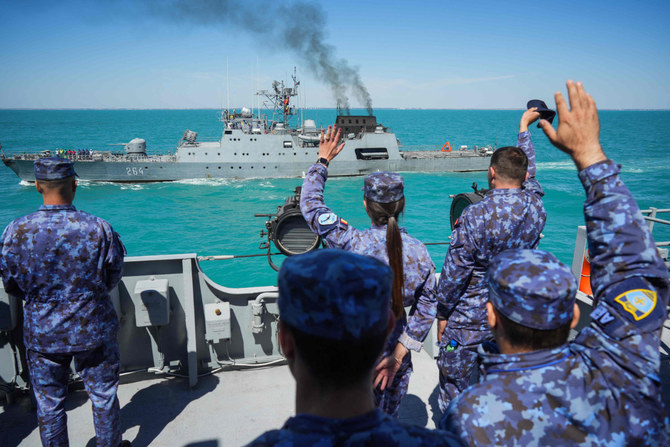
- ARAB NEWS
- 06 Jul 2025

NATO leaders will meet in Madrid next week at a crucial time for the transatlantic alliance. It will be their first summit since Russia’s invasion of Ukraine in February and NATO’s defeat and withdrawal from Afghanistan last year.
The main focus of the meeting will be Ukraine. Russia’s invasion has completely altered the geopolitical landscape of the transatlantic community. The consequences of this war will not be fully felt or understood for years. The alliance will want to take steps to deal with the fallout from the conflict and to prepare for new security challenges in the future.
Also, considering the fragile security situation in Europe, it will be very important for all 30 NATO members to show cohesion and unity. While some who have cozy economic relations with Russia have caused some bumps in the road for the alliance, for the most part NATO members have been unified in their response to Russia.
So as the war rages, there are four issues that will dominate the agenda at the summit.
First and foremost is agreeing on ways to help Ukraine while deterring further aggression in eastern Europe. Since Russia invaded, many NATO members have stepped up to the plate to provide weapons and ammunition. They have also deployed forces to eastern Europe to bolster the alliance’s flank there.
However, some have done more than others. Poland and the UK have contributed billions of dollars’ worth of equipment to the Ukrainians. Smaller countries such as Estonia are the biggest providers of weapons and military assistance on a per capita basis. But Germany, Europe’s largest economic power, has under-delivered on military support. Expect the summit to be used to secure more concrete pledges from NATO members when it comes to providing more weapons and munitions to Ukraine, and new measures to strengthen the alliance’s eastern flank.
NATO has done more than any other organization to promote democracy, peace and security in Europe and the broader transatlantic community
Luke Coffey
The second issue to watch is the publication of NATO’s new Strategic Concept, its first since 2010. Had it not been for Russia’s invasion of Ukraine, this would have been the big news from the summit. The Strategic Concept is the premier policy document to guide the alliance’s role into the future. The current version is woefully out of date. In the past 12 years there have been major geopolitical crises such as the so-called Arab Spring and its aftermath, NATO’s intervention in Libya, the defeat in Afghanistan, Russia’s invasion of Ukraine, the rise of Daesh, the rise of China, and COVID-19. None of these issues were addressed in the 2010 Strategic Concept in any meaningful way. Although it is 40 pages long, the words “pandemic” and “China” do not appear. Of course, Russia will be the main focus of the new document, but it will be equally interesting to see how other issues such as China and engagement with the Middle East will be addressed.
Third will be Sweden and Finland’s NATO membership application. In the aftermath of Russia’s invasion of Ukraine, the two Nordic countries have formally applied to join the alliance. This is a historic moment in European security matters. Both countries possess robust military capabilities and decades of experience working as partners with NATO. For historical and political reasons they have remained militarily non-aligned, but their partnerships with NATO are currently the closest of any nonmember states and the close relations go back decades. However, Turkey has been hesitant to support their applications for membership and any addition of new members requires unanimity. Ankara has legitimate concerns about members of the outlawed Kurdish separatist PKK group being protected in Sweden. It is likely that this issue will eventually be resolved, but it will take time. Expect it to be hotly debated behind closed doors.
Finally, as always, spending will be on the agenda. As an intergovernmental security alliance, NATO is only as strong as its member states. At the 2014 summit in Wales, they recommitted to spending 2 percent of GDP on defense by 2024. Since then, NATO defense spending has steadily risen, particularly since Russia’s first invasion of Ukraine in 2014. In 2021, eight members hit the benchmark of spending 2 percent of GDP on defense (in 2014 only three did so). Russia’s invasion has been a wake-up call, and several more NATO members are expected to hit the benchmark soon.
Since its creation in 1949, NATO has done more than any other organization to promote democracy, peaceand security in Europe and the broader transatlantic community. Ensuring that NATO can face the challenges of the 21st century while being able to support Ukraine in its time of need will be the main challenge of the meeting.
The Madrid summit offers an important chance for NATO’s leaders to chart a path for the future. They should not squander this opportunity.
• Luke Coffey is the director of the Douglas and Sarah Allison Center for Foreign Policy at the Heritage Foundation. Twitter: @LukeDCoffey